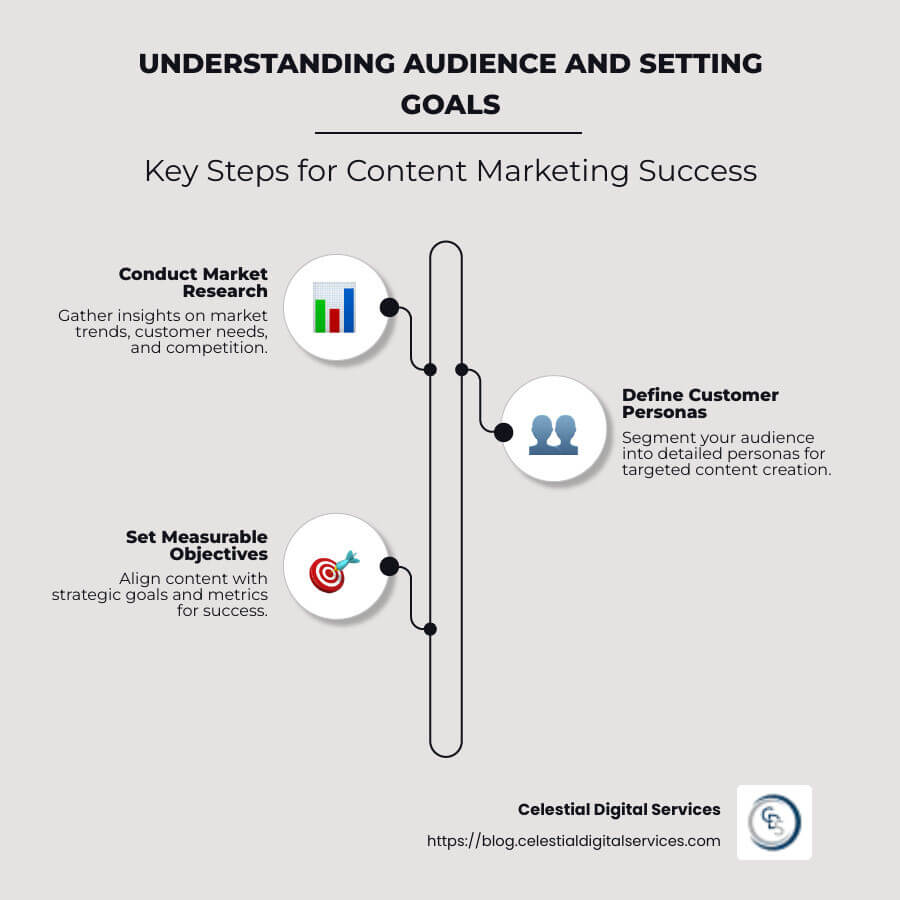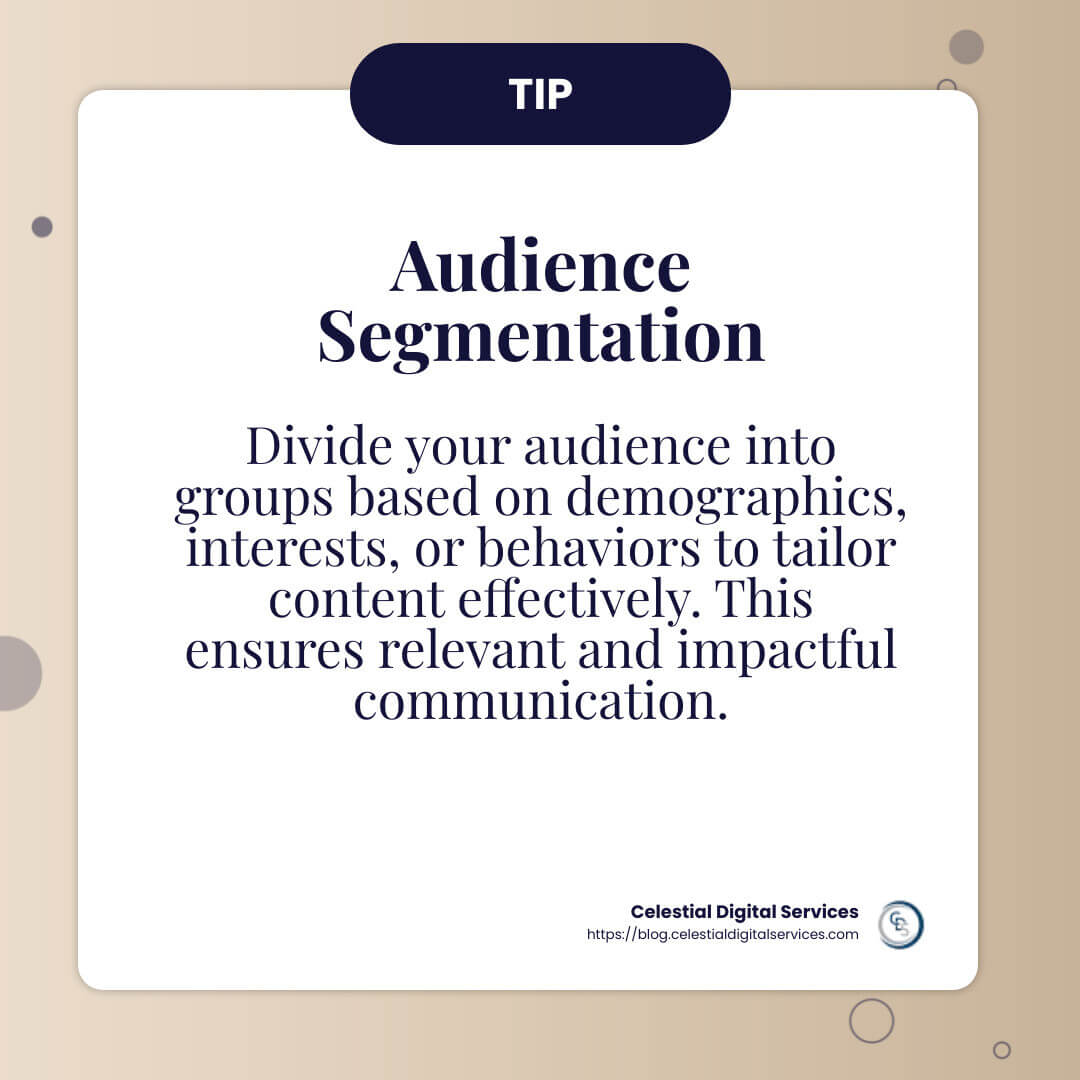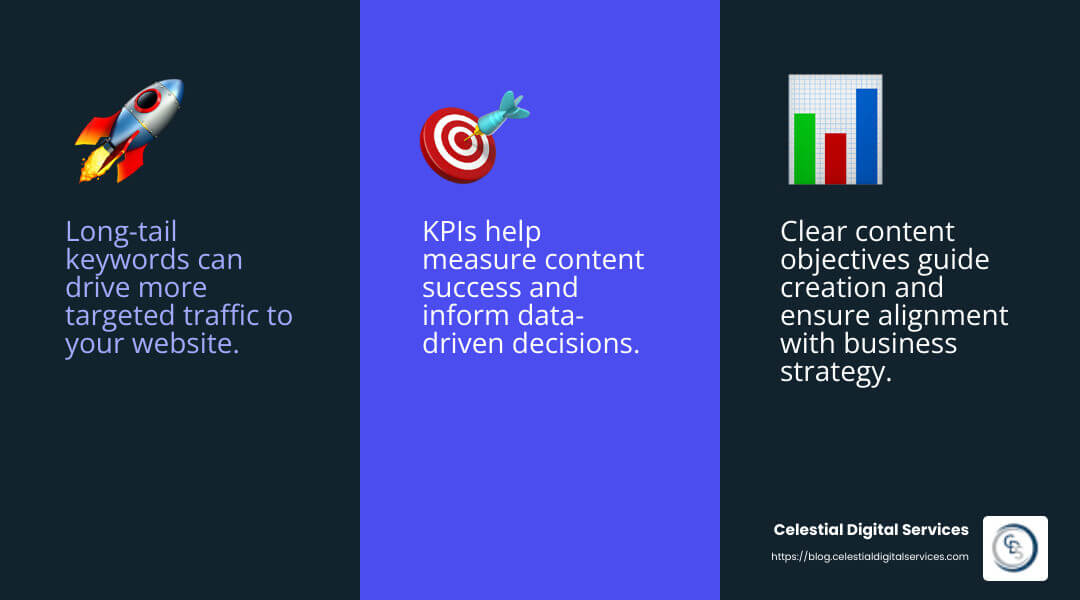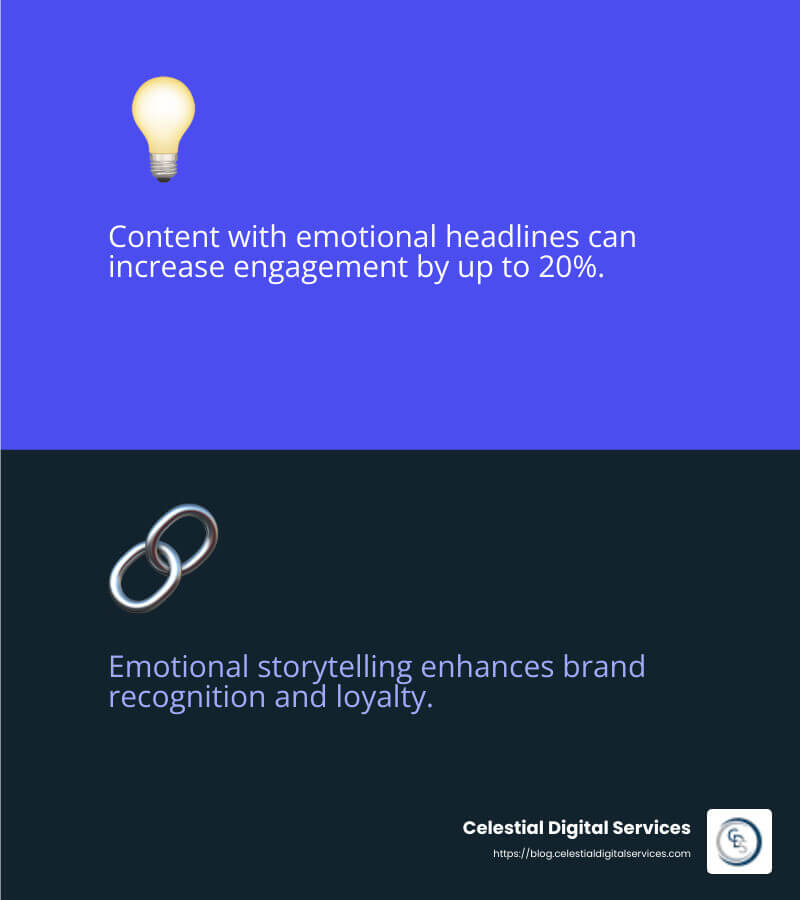Content marketing secrets are the key to changing your business reach and engagement. If you’re in search of these elusive tactics, understanding your audience and setting strategic goals is crucial. Start by clearly defining your target audience and segmenting them into different personas to better tailor your content. By doing so, you can create content that not only resonates but also leads to meaningful engagement and conversions.
Key content marketing secrets include:
– Knowing your audience deeply
– Setting clear strategic goals
– Crafting emotionally engaging content
– Repurposing content for multiple platforms
Having a detailed understanding of your audience allows you to craft content that perfectly matches their needs and preferences. Align this with your strategic goals to ensure every piece of content you create helps move the needle toward those objectives.
With a decade of experience in digital marketing, I’ve helped businesses harness the power of content marketing secrets to improve online presence and drive growth. From defining audiences to setting strategic goals, these foundational steps are vital.

Define Your Audience
Understanding your audience is the backbone of successful content marketing. To truly connect with your audience, you need to segment them effectively and develop detailed personas. This ensures that your content is relevant and impactful.
Segmentation
Segmentation involves dividing your audience into distinct groups based on shared characteristics. These might include demographics, interests, or behaviors. By doing this, you can tailor your content to meet the specific needs of each group. For example, a financial services company might segment its audience into young professionals, retirees, and small business owners, each with unique financial needs and concerns.
Personas
Personas are detailed profiles of your ideal customers within each segment. They include information like job roles, challenges, and even preferred publications. Creating personas helps you visualize who you’re writing for, making it easier to craft content that speaks directly to them. For instance, if you’re targeting young professionals, your persona might be “Tech-Savvy Tara,” a 28-year-old software developer who values time-saving financial advice.
Content Relevance
To keep your audience engaged, your content must be relevant to their interests and pain points. This means continually updating and optimizing your content to reflect changing trends and needs. A great example of content relevance is Bankrate’s use of financial calculators. These tools address significant pain points for their audience, such as planning for retirement or buying a house, making Bankrate a go-to resource in the financial sector.

By segmenting your audience and developing detailed personas, you ensure that your content is not only seen but also resonates with the right people. This approach leads to higher engagement, more meaningful interactions, and ultimately, better results for your content marketing efforts.
Establish Clear Goals
Setting clear goals in content marketing is crucial for achieving success. Without them, it’s like setting sail without a destination. Let’s explore three key areas: long-tail keywords, content objectives, and KPI focus.
Long-Tail Keywords
Long-tail keywords are specific phrases that target niche audiences. Unlike broad keywords, they have less competition and attract more qualified traffic. For instance, instead of targeting “running shoes,” you might focus on “best running shoes for flat feet.” This approach helps you reach people who are closer to making a purchase.
Using tools like SEMrush or Ahrefs can help you identify the best long-tail keywords for your content. These keywords should align with your audience’s search intent and your content’s purpose.
Content Objectives
Every piece of content should have a clear objective. Whether it’s driving traffic, generating leads, or building brand awareness, knowing your goal will guide your content creation.
For example, if your objective is to build authority in your industry, you might create in-depth guides or thought leadership articles. If lead generation is your goal, consider creating gated content like e-books or webinars.
Having a clear objective ensures your content is purposeful and aligned with your broader business strategy.
KPI Focus
Key Performance Indicators (KPIs) are metrics that help measure the success of your content. They provide valuable insights into what’s working and what needs improvement.
Common KPIs include website traffic, conversion rates, and social media engagement. It’s important to choose KPIs that align with your content objectives. For instance, if your goal is to increase brand awareness, track metrics like social media shares and impressions.

By focusing on the right KPIs, you can make data-driven decisions to optimize your content marketing strategy.
Establishing clear goals with long-tail keywords, content objectives, and a KPI focus sets the stage for effective content marketing. Up next, we’ll explore how to optimize and distribute your content for maximum impact.
Content Marketing Secrets
In content marketing, there are a few secrets that can make a big difference. Let’s explore three key areas: problem-solving content, emotional engagement, and content repurposing.
Problem-Solving Content
Creating content that solves problems for your audience is a powerful way to build trust and authority. Start by identifying the “pain points” your audience faces. These are the challenges or issues they encounter that your content can address.
For instance, Bankrate has become a go-to resource by offering tools like loan and financial calculators that help solve major financial pain points. This approach not only provides value but also positions you as an expert in your field.
To identify these pain points, consider talking to your sales team, conducting surveys, or engaging with your audience on social media. Once you know the problems, craft content that offers solutions.
Emotional Engagement
Emotion is a secret ingredient in content marketing that can lead to greater success. Whether it’s making your audience laugh, inspiring them, or creating a sense of urgency, tapping into emotions can drive more traffic and engagement.
According to Blair Williams, using emotional headlines and content can make your brand stand out. Think about how you can incorporate storytelling, humor, or curiosity into your content to create a stronger connection with your audience.

Content Repurposing
Repurposing content is a smart way to maximize your efforts and reach new audiences. Instead of creating new content from scratch, take existing pieces and present them in different formats or on different platforms.
For example, you can turn a well-performing blog post into a video, infographic, or podcast episode. This not only saves time but also allows you to reach people who prefer different types of content.
Repurposing helps you get more mileage out of your content and ensures it reaches a wider audience. It’s a strategy that can keep your content fresh and engaging without constant reinvention.
By focusing on problem-solving content, emotional engagement, and content repurposing, you can open up the full potential of your content marketing strategy. Next, we’ll dive into how to optimize and distribute your content for maximum impact.
Optimize and Distribute
Once you’ve crafted your content, the next step is crucial: optimization and distribution. This ensures your hard work reaches the right people and makes the intended impact. Let’s break down the essentials of this process: SEO optimization, multi-channel promotion, and native advertising.
SEO Optimization
Search Engine Optimization (SEO) is the backbone of online visibility. Without it, your content might get lost in the vast sea of the internet.
To start, focus on keyword research. Tools like Ahrefs and Semrush can help identify the terms your audience is searching for. Aim for long-tail keywords that are specific, as they often have less competition and attract more targeted traffic.
Next, ensure your content is optimized for search engines. This includes using keywords naturally throughout your content, optimizing meta descriptions, and making sure your website is mobile-friendly. Google’s algorithms favor content that is fresh and relevant, so keep your content updated regularly.

Multi-Channel Promotion
Don’t rely on a single platform to distribute your content. Instead, adopt a multi-channel approach to broaden your reach.
Consider using social media platforms like Facebook, Instagram, and LinkedIn, depending on where your audience spends their time. Each platform has its unique dynamics, so tailor your content accordingly. For instance, use images and short videos on Instagram, while longer articles might perform better on LinkedIn.
Email marketing is another powerful channel. Sending newsletters or updates can keep your audience engaged and informed about your latest content.
Additionally, explore partnerships with influencers or guest blog on other sites to tap into new audiences. This strategy can amplify your content’s reach and drive more traffic to your website.
Native Advertising
Native advertising is a subtle yet effective way to promote your content. Unlike traditional ads, native ads blend seamlessly with the platform’s content, making them less intrusive and more engaging.
By integrating your content with the form and function of the web page it appears on, you can capture your audience’s attention more naturally. This approach is especially effective as consumers grow wary of overt advertising.
Consider platforms that offer native advertising options and align with your brand values. This synergy can improve your brand’s credibility and foster a deeper connection with your audience.
By mastering SEO, embracing multi-channel promotion, and leveraging native advertising, you can ensure your content reaches its full potential. Next, we’ll explore how to analyze and adapt your content strategy for continuous improvement.
Analyze and Adapt
Creating content is just the beginning. To stay ahead, you must analyze and adapt. This involves keeping an eye on performance data, staying updated on content trends, and conducting thorough competitor analysis.
Performance Data
Start by diving into your performance data. Tools like Google Analytics provide insights into how your content is performing. Look at metrics such as page views, bounce rates, and conversion rates.
For instance, if a blog post has a high bounce rate, it might mean the content isn’t meeting user expectations. Adjusting the content to better match the audience’s needs can improve engagement.
Key metrics to track:
- Engagement: Are users interacting with your content?
- Traffic sources: Where is your audience coming from?
- Conversion rates: Is your content leading to desired actions?
By understanding these metrics, you can identify what’s working and what needs improvement.
Content Trends
Stay informed about the latest content trends to keep your strategy fresh. Trends can shift quickly, and what worked last year might not work today.
For example, video content has seen a significant rise in popularity. As noted in the research, platforms like Instagram and Snapchat are leading this trend with short, engaging videos. Adapting your content to include these formats can increase your reach and engagement.
To stay updated:
- Follow industry blogs and reports.
- Attend webinars and conferences.
- Use social listening tools to gauge audience sentiment.
By aligning your content with current trends, you can maintain relevance and capture your audience’s attention.
Competitor Analysis
Understanding your competitors is crucial for crafting a standout content strategy. Conduct a competitor analysis to see what others in your industry are doing.
Look at their content types, engagement levels, and distribution channels. Tools like Ahrefs can help you identify which keywords your competitors are ranking for, giving you insights into potential gaps in your strategy.
Steps for effective competitor analysis:
- Identify key competitors in your niche.
- Analyze their content strategy and performance metrics.
- Note the types of content that resonate with their audience.
By learning from your competitors, you can refine your strategy to better meet the needs of your audience and stand out in the crowded content landscape.
By analyzing performance data, keeping up with content trends, and understanding your competitors, you can continuously refine your content strategy. Next, we’ll answer some frequently asked questions about content marketing to further improve your understanding.
Frequently Asked Questions about Content Marketing
What is the 3-3-3 rule in marketing?
The 3-3-3 rule in marketing is a straightforward method to ensure your content is concise and impactful. It suggests that any marketing message should be understood in three seconds, be summarized in three sentences, and convey just three key points. This rule helps keep your content focused and makes it easier for your audience to digest and remember your message. It’s especially useful in today’s digital world, where attention spans are short.
What are the 3 C’s of content marketing?
The 3 C’s of content marketing are Create, Curate, and Connect.
-
Create: This involves producing original, high-quality content that addresses your audience’s needs and interests. Whether it’s blog posts, videos, or infographics, the goal is to provide value and build trust.
-
Curate: Curating content means gathering and sharing relevant information from various sources. It’s about being a reliable resource for your audience by providing them with a mix of your own content and valuable external content.
-
Connect: This step is about engaging with your audience. Respond to comments, foster discussions, and build a community around your brand. Connecting with your audience improves loyalty and encourages them to share your content.
What are the golden rules of content marketing?
The golden rules of content marketing are principles that guide the creation and distribution of effective content. They include:
-
Know Your Audience: Understand who they are, what they need, and how they consume content. Tailor your content to their preferences and pain points.
-
Provide Value: Content should educate, entertain, or solve a problem. It’s not about selling but about offering something meaningful to your audience.
-
Be Consistent: Regularly publish content to stay top-of-mind. Consistency builds trust and keeps your audience engaged.
-
Measure and Adapt: Continually assess the performance of your content. Use analytics to understand what works and what doesn’t, and adapt your strategy accordingly.
By following these golden rules, you can improve your content marketing efforts and achieve better results.
In the next section, we’ll dive into optimizing and distributing your content to ensure it reaches the right audience and achieves your marketing goals.
Conclusion
As we wrap up our journey into content marketing secrets, it’s important to remember how these strategies can transform your brand’s online presence. At Celestial Digital Services, we are passionate about helping startups and local businesses thrive in the digital arena. Our mission is to empower small enterprises with innovative solutions that simplify digital marketing.
Creating demand for your content is not just about crafting engaging material; it’s about forging a genuine connection with your audience. By understanding their needs, emotions, and challenges, we can create content that resonates and builds lasting relationships. This is where the magic of content marketing truly lies—bridging the gap between your brand and your audience to foster trust and loyalty.
Our approach at Celestial Digital Services involves a blend of strategic content creation, smart distribution, and continuous analysis. We ensure that every piece of content not only reaches the right people but also makes a meaningful impact. By leveraging data and insights, we adapt and refine our strategies to stay ahead in the changing digital landscape.
Whether it’s through SEO, lead generation, or social media marketing, our goal is to improve your brand’s visibility and engagement. We invite you to explore our services and see how we can help your business grow.
For more insights and solutions, visit our Celestial Digital Services blog and find how we can be your reliable partner in digital marketing success.



